|
Coins
|
|
The Bank of British West Africa (BBWA) was created as a banking unit for a shipping company (Elder Dempster); and while it operated in other countries at first, it branched into Liberia in 1905. By 1916, it became the state bank of Liberia. Then, in September 1930, it closed its Liberian offices, citing limited sanitation facilities in Monrovia which, it claimed, presented a danger to the bank’s staff. Closure created a major problem for United States foreign and banking policy in Liberia. But a solution was at hand. The Firestone Tire and Rubber Company of Akron, Ohio had recently opened its rubber plantations in Liberia. It's United States Trading Company, already operating in Liberia, took over banking functions that had been abandoned by BBWA. In 1935, the USTC (Banking Department) became the Bank of Monrovia. In late 1933, at age 24, Walter Logan Fry took a job as Chief Cashier of USTC (Banking Branch). His ship arrived in Monrovia in January, 1934. The USTC bank became the Bank of Monrovia by the time he left in January 1936. In a document prepared August 20, 1953, he described his duties for the Bank of Monrovia, as follows: "Some of my duties were to audit the work of the twelve bookkeepers and clerks; balance the foreign exchange accounts; transfer funds by cable between our New York and London accounts; order money shipped between London and Liberia as the use of money expanded or contracted; transfer funds into a local account after advice of a deposit in one of our foreign accounts; arrange for transportation by coding and sending cables requesting that a ship be ordered to call at the Port of Monrovia, and decoding cables advising the arrival of a ship and requesting that the proper port officials and stevedoring company be on hand to meet her; and accept payment on drafts and bills." In his letters he relates an interesting story. "Last evening the English mailboat came in about ten-thirty and we had to go out because there was ten thousand pounds ($50,000) in silver on it for us. We slung the money over the side in regular cargo slings into surf boats, and pulled for shore. On the wharf we had two gasoline pressure lamps to light the place while we loaded the money on a Ford truck to haul to the bank. We had no guns and it was much too dark to watch the boys ahead load the money through the warehouse to the truck but we had no trouble at all. Bob [Hilbert, then recently the new chief of The Bank of Monrovia] will never get over the utter lack of precaution taken but then he hasn't gotten to know the ways of the people yet." When he returned to the United States from Liberia in January of 1936, he brought back several coins dated 1847 and 1862. These copper coins, in One Cent and Two Cent denominations, were the only coins issued by the Liberian government between 1847 and 1896, at which time a full coinage was introduced. Some of the coins brought back were given to brothers and sisters, but a few remained in the collection, including those below. Four coins appear to be VF30 to XF45 in grade, with three coins being PO1 to AG3. |
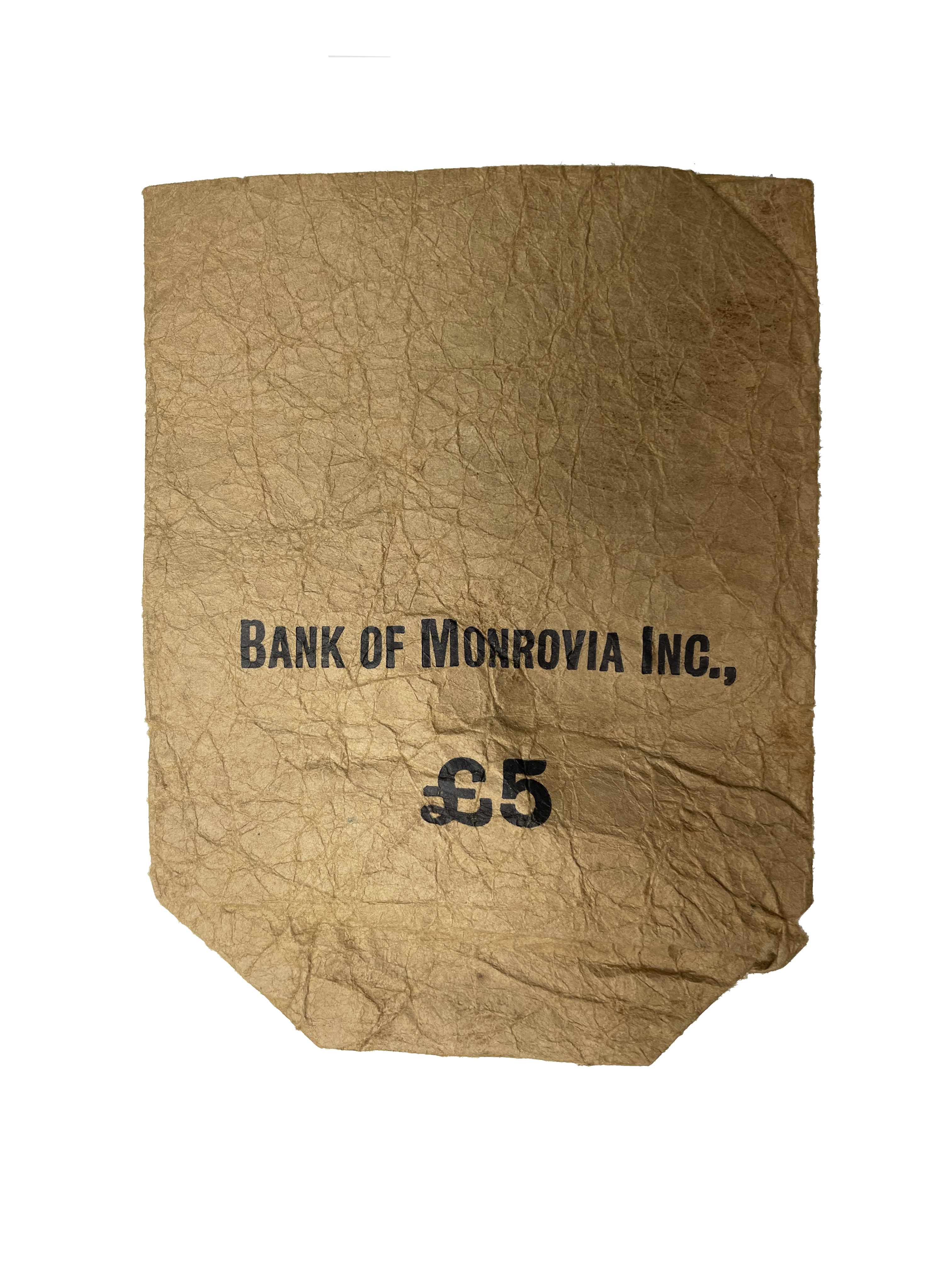
|
Paper_007080 |
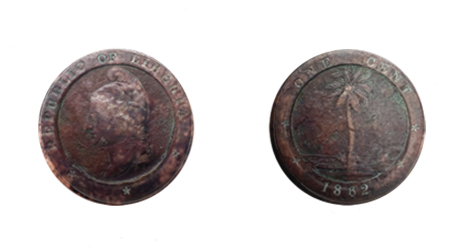
|
Coins_007081 |
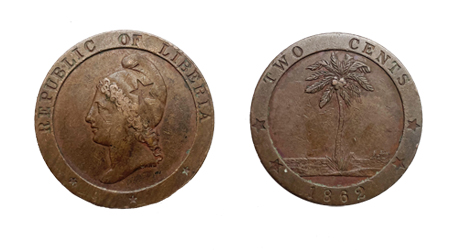
|
Coins_007082 |
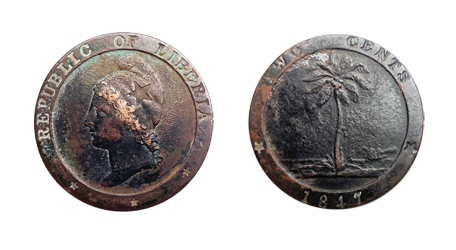
|
Coins_007083 |
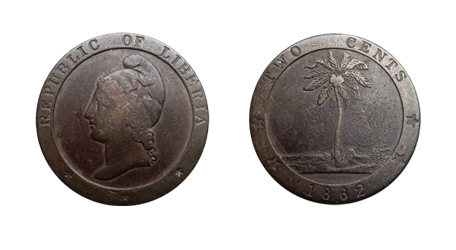
|
Coins_007084 |
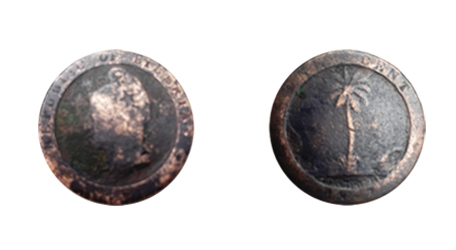
|
Coins_007085 |
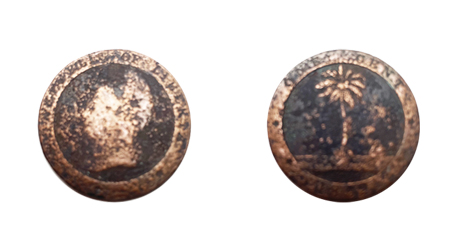
|
Coins_007086 |
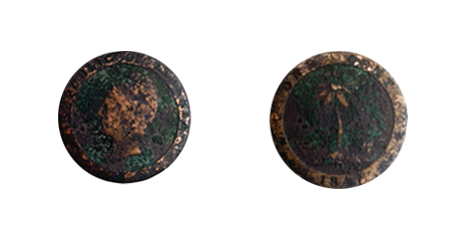
|
Coins_007087 |
|
The British Museum has a very fine two cent coin, presented below in black and white. |
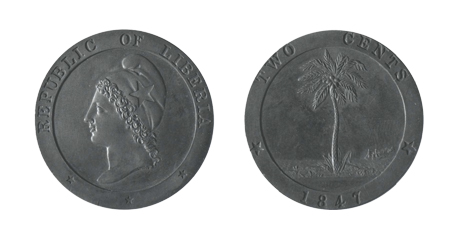
|
Liberian Two Cent Coin |